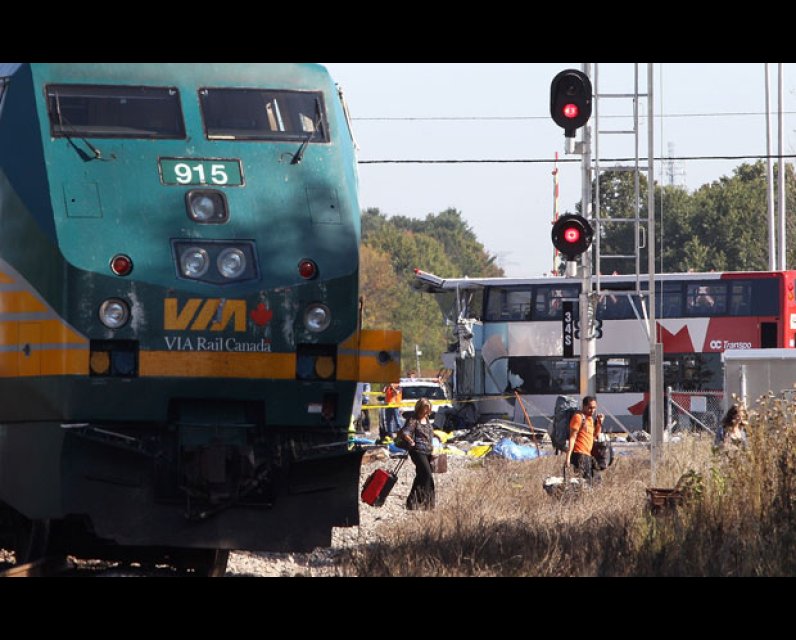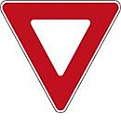Warning message
- Last import of users from Drupal Production environment ran more than 7 days ago. Import users by accessing /admin/config/live-importer/drupal-run
- Last import of nodes from Drupal Production environment ran more than 7 days ago. Import nodes by accessing /admin/config/live-importer/drupal-run
Unpublished Opinions
Unpublished.ca is a web portal on politics and current affairs in Canada. It provides the opportunity for Canadians to dig deeper into the issues affecting them, and to weigh-in on these issues in a persuasive and respectful way. Join the movement and have your say today!
TSB Rail Safety Advisory Letter re: OC Transpo buses traversing crossings with activated AWD protection

On Feb. 25th, the Transportation Safety Board of Canada issued two letters to the City of Ottawa regarding their investigation into the OC Transpo Via Rail bus crash on September 18, 2013. This is the first letter of the two.
Below the letter you will find the City's response in a memo to the Mayor and City Council from Deputy City Manager Steve Kanellakos.
Click here to read the 2nd letter.
25 February 2014
His Worship Jim Watson
Mayor, City of Ottawa
110 Laurier Avenue West
Ottawa, Ontario
K1P 1J1
Subject:
RAIL SAFETY ADVISORY LETTER – 01/14
OC Transpo buses traversing crossings with activated AWD protection
- the crossing lights, bells and gates were activated about 47 seconds prior to the accident;
- once activated, the crossing lights flash/bells sounded for about 12 seconds before the gates began to descend;
- it took an additional 12 seconds for the gates to fully deploy; and
- the gates were fully horizontal for 25 seconds prior to impact.
Since the accident, there have been 4 reports of an OC Transpo bus travelling over a crossing while the lights and bells of the AWD crossing protection were activated. These incidents are not normally reportable to the Transportation Safety Board of Canada (TSB). However, in light of the accident and in response to heightened public concern, the TSB has followed up on these incidents as part of its ongoing investigation (R13T0192). Each of the following cases occurred at the Transitway crossing:
- On 01 October 2013, at about 0745, a northbound articulated bus (Route 73), which had departed OC Transpo's Fallowfield Station, approached the crossing when the lights and bells activated. The driver indicated that the bus was about 30 feet from the crossing at the time and observed a westbound train about 1 km to the east. As the crossing gate had not yet descended, the driver believed that it was safe to proceed. In addition, since the bus was full and a number of passengers were standing, the driver believed that the bus could not be stopped without putting passengers at risk and proceeded through the crossing while the AWD was activated.
- On 11 October 2013, at about 1848, a southbound DD bus (Route 77) proceeded through the crossing while the lights and bells were activated as an eastbound train was departing VIA's Fallowfield Station. At the time, the bus was travelling southbound on the Transitway enroute to OC Transpo's Fallowfield Station. The bus approached the crossing at just under 60 km/h when the crossing lights and bells activated. The driver indicated that the bus was about 15 feet from the crossing and the gates had not descended. The driver believed that the bus could not be stopped safely without putting passengers at risk.
- On 30 October 2013, at about 1940, a southbound bus (Route 95) proceeded through the crossing while the crossing lights and bells were activated as a train approached. A review of OC Transpo GPS data determined that the bus was travelling at 58 km/h (8 km/h over the speed limit). OC Transpo Transportation department stated that it was
“not illegal to go through flashing train lights.”
Several days later, an OC Transpo Supervisor met with the driver and suggested that the driver“hover”
over the brake when approaching a railway crossing and to be prepared to stop when the crossing lights are activated. - On 27 January 2014, at about 0745, it was reported that a southbound OC Transpo bus had proceeded through the crossing while the lights and bells were activated. Follow-up by OC Transpo determined that the bus involved was northbound, travelling at 52 km/h at the time. The bus was running 27 minutes behind schedule due to poor driving conditions during a winter storm. The driver indicated that the bus was about 20 feet from the crossing when the lights and bells activated. However, a bus passenger suggested that the bus was about 100 metres from the crossing at the time. Believing that the bus could not be stopped safely without putting passengers at risk, the driver proceeded through the crossing while the lights and bells were activated.
Based on the 4 OC Transpo reports, the following observations were made:
-
Two cases involved northbound buses and 2 involved southbound buses. Although the City of Ottawa had previously committed to install advance warning lights (prepare to stop) on the northbound approach, the cases involving southbound buses suggest that additional measures on both sides of the crossing may be required.
-
One driver was driving just over the speed limit even though the road conditions were very poor due to a winter storm. Vehicle drivers are expected to drive safely according to posted speed limits and road conditions. When driving conditions are poor, even driving the speed limit may be unsafe when approaching a railway crossing.
-
In 3 of the 4 cases, the drivers indicated that the bus was within 15 – 30 feet from the crossing when the lights activated. They believed that the bus could not be stopped safely without putting passengers at risk. One of the cases was contradicted by a passenger who suggested the crossing lights activated when the bus was about 100 metres from the crossing. At 100 metres, there would likely have been sufficient time to safely stop the bus in advance of the crossing, if driving was appropriate for the road conditions.
-
The bus drivers in these occurrences approached the crossing at or slightly above the posted roadway speed without being prepared to stop. Roadway signage is posted alongside most public roads and guidance for the use of signage is detailed by the Manual of Uniform Traffic Control Devices (MUTCD) for Canada. Vehicle drivers are trained to observe the roadway signage and take appropriate action as required. Among the primary roadway signs are
“Regulatory”
signs which include the STOP, YIELD and RAILWAY CROSSING signs (See Figures 1 to 3).

Figure 2. Yield sign

Figure 3. Crossing sign

The railway crossing sign is X-shaped. With its white background and red outline, it has similar coloring to a Yield sign and means essentially the same thing. As outlined in the Ontario Ministry of Transportation Driver's Handbook, the railway crossing sign warns that railway tracks cross the road and drivers should slow down when approaching a crossing, be prepared to stop and yield the right of way to a train.
- There is about a 12 second delay between the time the signals activate and the time that the gate begins to descend. The time delay is a safety feature built into the crossing system that allows a vehicle that has entered the crossing zone adequate time to clear before the arrival of a train. While crossing signals are generally reliable, there may be situations where the gate does not come down. If this occurs, a decision to
“run”
the crossing before the gate drops may place the vehicle at risk. - It was suggested that it is not illegal to drive through activated crossing signals. Failing to stop at railway crossing signals when activated is a violation under Section 163 of the Ontario Highway Traffic Act (OHTA). However, the OHTA does not apply to vehicles operating on the Transitway as the Transitway is a private road.
The operation of vehicles on the Transitway is governed by Ottawa City BY-LAW NO. 2007 – 268 Respecting Public Transit (enacted 13 June 2007). The BY-LAW contains no provision that requires vehicles to stop at a railway crossing signal when activated which renders a violation under the OHTA unenforceable on the Transitway.
- Operation Lifesaver (OL) is a national public awareness program aimed at educating Canadians about the hazards surrounding rail property and trains. OL indicates that opportunities for improving crossing safety include: Education for vehicle drivers on risks associated with railway crossings, Engineering to improve crossing protection, and Enforcement of crossing violations to reinforce safe driving habits. A weakness in one or more of these elements at a crossing may increase the risk of a crossing accident.
While these 4 incidents involved OC Transpo buses proceeding through activated railway crossing signals, similar situations can happen anywhere in Canada. Trains always have the right of way at railway crossings. Even when train emergency brakes are applied, the train will require a great distance to stop. To reduce crossing accidents, it is imperative that all roadway vehicle drivers slow down when approaching any railway crossing, look both ways, be prepared to stop and yield the right of way to a train.
With regards to these specific incidents and in consideration of public concern, the City of Ottawa may wish to put appropriate measures in place to ensure that buses are able to stop safely in advance of an activated railway crossing signal.
We would appreciate if you can inform us of any safety measures you plan to implement. We will take these measures into consideration as part of our ongoing investigation.
Yours sincerely,
Original signed by
Kirby Jang
Director
Investigations, Rail/Pipeline
Cc:
Mr. Luc Bourdon,
Director General,
Rail Safety
Transport Canada
City Manager
City of Ottawa
General Manager Transit Services
City of Ottawa
Senior Director,
Safety, Security & Risk Management
VIA Rail Canada Inc
Director,
Corporate Security & Regulatory Affairs
VIA Rail Canada Inc.
Manager Risk Management
VIA Rail Canada Inc.
Appendices
Appendix 1 – Site Diagram
Appendix 1 – Site Diagram

- Footnote 1
-
The speed limit for this portion of the Transitway was reduced to 50 km/h shortly after the accident on 18 September 2013.
MORE:



Comments
Be the first to comment